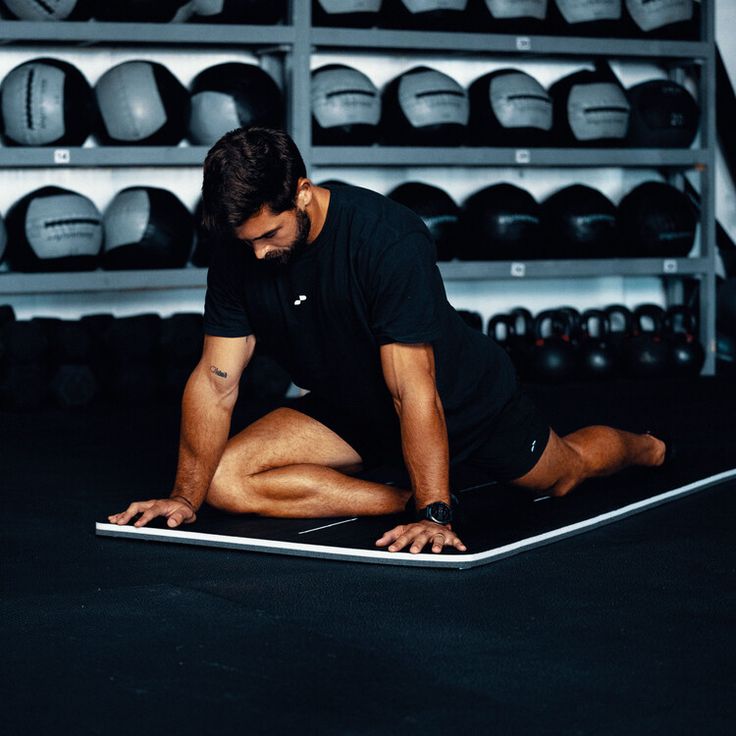The Science Behind Stretching
Understanding the science behind stretching is crucial for appreciating its benefits. Stretching exercises work by elongating the muscles and tendons, which can lead to an increase in the range of motion around a joint. This enhanced flexibility not only aids in better performance during physical activities but also plays a vital role in reducing the likelihood of injury. By preparing the muscles for exertion and helping them recover afterward, stretching can significantly decrease muscle soreness and stiffness.
Types of Stretching
There are various types of stretching techniques, each with its unique benefits:
- Static Stretching: This involves holding a stretch for a prolonged period, typically between 15 to 60 seconds. It is effective for improving flexibility and is best performed after a workout.
- Dynamic Stretching: This type involves movement and is usually performed before a workout to warm up the muscles. It prepares the body for physical activity and enhances blood flow.
- PNF Stretching: Proprioceptive Neuromuscular Facilitation (PNF) combines stretching and contracting of the muscle group being targeted. It is often used in rehabilitation settings and is effective for improving flexibility.
Why Minimizing Injury Risk is Crucial
Injuries can derail progress, lead to significant downtime, and create long-term setbacks in one’s fitness journey. Whether it’s a sprain, strain, or other forms of musculoskeletal injuries, the consequences can be detrimental. By integrating stretching exercises into your routine, you are taking proactive steps to safeguard your body against these injuries. Improved flexibility allows for better movement mechanics, which can alleviate stress on joints and muscles during physical activities.
Setting the Stage for Stretching
Before engaging in any stretching routine, it is essential to prepare your body adequately. A proper warm-up increases blood flow to the muscles and enhances their elasticity, making them more receptive to stretching. Simple cardiovascular activities such as brisk walking or light jogging for 5-10 minutes can effectively warm up your muscles. Once your body is warmed up, you can proceed to the stretching exercises.
10 Essential Stretching Exercises
Below, we will explore ten essential stretching exercises that can help minimize injury risk and enhance flexibility. Each exercise targets specific muscle groups and can be easily incorporated into your daily routine.
1. Neck Stretch
The neck is often neglected during stretching routines, yet it is crucial for overall mobility. To perform a neck stretch, sit or stand comfortably, and gently tilt your head to one side, bringing your ear closer to your shoulder. Hold for 15-30 seconds and repeat on the other side. This stretch alleviates tension in the neck and shoulders, reducing the risk of headaches and neck injuries.
2. Shoulder Stretch
To stretch the shoulders, extend one arm across your body at shoulder height. Use the opposite hand to gently pull the arm closer to your chest. Hold for 15-30 seconds and switch sides. This exercise promotes shoulder flexibility and helps prevent injuries related to repetitive overhead movements.
3. Chest Stretch
Open up your chest and improve posture by performing a chest stretch. Stand tall and clasp your hands behind your back, straightening your arms and lifting them slightly. Hold the stretch for 15-30 seconds. This exercise counteracts the effects of prolonged sitting and reduces the risk of shoulder and upper back injuries.
4. Triceps Stretch
For a triceps stretch, raise one arm overhead and bend the elbow, bringing your hand down your back. Use the opposite hand to gently push down on the elbow. Hold for 15-30 seconds and switch sides. This stretch is particularly beneficial for athletes involved in overhead sports, as it enhances flexibility in the upper arms.
5. Side Stretch
To stretch the sides of your body, stand with your feet hip-width apart. Raise one arm overhead and lean to the opposite side, feeling the stretch along your side. Hold for 15-30 seconds and repeat on the other side. This exercise improves lateral flexibility and can help reduce the risk of side strains.
6. Hamstring Stretch
To target the hamstrings, sit on the floor with your legs extended in front of you. Reach forward towards your toes, keeping your back straight. Hold the stretch for 15-30 seconds. This exercise is essential for athletes, as tight hamstrings can lead to injuries during running and jumping activities.
7. Quadriceps Stretch
Stand on one leg and bring the opposite foot towards your glutes, holding it with your hand. Keep your knees close together and hold for 15-30 seconds. This stretch targets the quadriceps, which are vital for running and jumping, and can help mitigate injury risk.
8. Hip Flexor Stretch
To stretch the hip flexors, kneel on one knee while the other foot is in front, creating a 90-degree angle. Push your hips forward gently and hold for 15-30 seconds. This stretch is particularly important for individuals who sit for extended periods, as tight hip flexors can lead to lower back pain and injuries.
9. Calf Stretch
Stand facing a wall and place your hands against it. Step one foot back, keeping it straight, and bend the front knee. Press your back heel into the ground and hold for 15-30 seconds. This stretch targets the calf muscles, which are crucial for walking, running, and jumping.
10. Spinal Twist
Sitting on the floor with your legs extended, bend one knee and place that foot outside the opposite thigh. Use your opposite arm to gently pull the bent knee towards you while twisting your torso. Hold for 15-30 seconds and switch sides. This stretch improves spinal flexibility and can help alleviate tension in the lower back.
Incorporating these essential stretching exercises into your routine can greatly enhance your flexibility and minimize the risk of injury. Remember to perform each stretch mindfully, focusing on your breathing and never pushing your body beyond its limits. Regular practice will yield significant benefits over time.
Understanding Your Body’s Limits
Before diving into advanced stretching techniques, it’s crucial to understand your body’s limits. Each individual has a unique range of motion, and pushing beyond this can lead to injury rather than improvement. Listening to your body is vital; if a stretch feels painful, it’s a signal to ease off. The goal is to feel a gentle pull, not pain. Maintaining a regular practice of stretching will gradually increase your flexibility, making it easier to achieve deeper stretches over time.
The Role of Breathing in Stretching
Breathing plays an essential role in effective stretching. Deep, controlled breaths can help relax your muscles and enhance your overall stretching experience. As you inhale, visualize your muscles expanding and loosening. When you exhale, imagine releasing tension. This practice not only improves your flexibility but also promotes relaxation and mental focus, making your stretching routine more effective.
Advanced Stretching Techniques
Now that you have a solid foundation of basic stretches, let’s explore some advanced techniques that can take your flexibility to the next level.
1. Active Stretching
Active stretching involves using your muscles to hold a position without assistance, engaging the target muscle group while stretching. For example, while performing a hamstring stretch, instead of reaching for your toes, lift one leg and hold it at a 90-degree angle using your hip flexors. This technique improves strength and flexibility simultaneously and is particularly effective for athletes looking to enhance performance.
2. Ballistic Stretching
Ballistic stretching involves bouncing movements to push your body beyond its normal range of motion. While this technique can be effective for certain athletes, it should be approached with caution. The risk of injury is higher with ballistic stretching, so it’s best suited for those with a solid flexibility foundation. For instance, a ballistic hamstring stretch might involve bouncing gently at the end of your reach. Always prioritize safety and control over depth.
3. Dynamic Stretching with Resistance
Adding resistance to dynamic stretching can significantly enhance your flexibility and strength. This involves using bands or weights while performing dynamic stretches. For example, attach a resistance band to a stable object and perform a leg swing, allowing the band to provide resistance as you move. This combination of movement and resistance is excellent for warming up muscles and improving overall functional flexibility.
Creating a Stretching Routine
To maximize the benefits of stretching, creating a structured routine is essential. Here are some tips to help you design an effective stretching routine:
1. Schedule Regular Stretching Sessions
Consistency is key when it comes to flexibility. Aim to incorporate stretching into your routine at least three to four times a week. Whether you choose to stretch before or after workouts, or dedicate specific days to flexibility training, regular practice will yield the best results.
2. Warm-Up Before Stretching
As previously mentioned, warming up is crucial to prepare your muscles for stretching. Engage in light aerobic activity for 5-10 minutes before your stretching routine. This could include brisk walking, cycling, or jumping jacks to increase blood flow and muscle elasticity.
3. Focus on Major Muscle Groups
While it’s essential to stretch all muscle groups, pay particular attention to major areas that are prone to tightness, such as the hips, hamstrings, quadriceps, and shoulders. Incorporate a variety of stretches targeting these areas for a comprehensive routine.
4. Hold Each Stretch for Sufficient Time
To reap the full benefits of stretching, hold each position for at least 15-30 seconds. This duration allows the muscle fibers to relax and lengthen effectively. If you’re working on more advanced stretches, consider holding for longer, but always listen to your body.
Conclusion: Embrace the Journey to Flexibility
Incorporating stretching into your fitness routine is a journey that requires patience, consistency, and mindfulness. By understanding the science behind stretching and employing both basic and advanced techniques, you can significantly enhance your flexibility while minimizing the risk of injury. Remember to listen to your body, focus on your breathing, and maintain a regular practice. Flexibility is not just about achieving deeper stretches; it’s about improving your overall physical resilience and enhancing your performance in daily activities and sports. Embrace this journey, and you will undoubtedly reap the rewards of a more flexible, injury-resistant body.





Leave a Reply